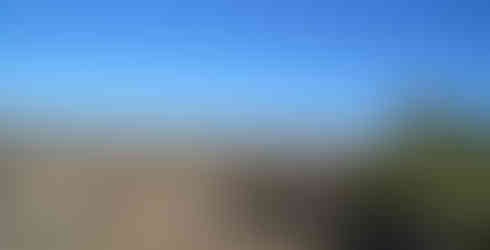Water is Life
- pauljacquin7
- Feb 3
- 3 min read
Updated: Feb 10
never more true than now, as the (Namibian) South waits for the rains

Start of a new cycle.
We could not dwell too long on our 2024 Review before sharing the excitement and anxiety that mark the start of the rainy season in Southern Africa.
Historical data (since 1981) show that January to March is the peak period for precipitation, yet patterns remain delightfully unpredictable. January and February show relatively the same level, while March can be wild - bringing either nice downpours or wishful thinking.
The excitement is that these new rains and liters of liquid gold coming from the skies spark a new cycle: grass regrows, dams and rivers refill, fauna gives life to a new generation.
Until then, it is a waiting game. People look up: they scan cloud cover, track wind directions, monitor precipitation in the East and North - leading indicators of rain or river flows coming from the plateau down to the plains. Meanwhile, the heat is scorching (day temperature hovers around 40°C, 100°F for several weeks), water tables shrink and aquifers dip to their lowest levels. Every drop counts.
No wonder that wildlife flock to our troughs and water points in greater numbers. With fences increasingly down and the guarantee of fresh water, our camera traps release a treasure of activity. In the last 3 months, we got sightings (# individuals) of: 20 springbok, 51 baboons, 57 steenbok, 192 kudus and 323 zebras.
These aren’t just passing visitors, many have become regulars. Dominant males (springbok, oryx) hold their positions; kudus, zebras, baboons rather move in groups of 3-5 at a time.
With a certain delight, we also caught “on file”: a flock of 3 Kori Bustards (the heaviest flying bird in Africa), a Cape Eagle Owl and a pair of porcupines foraging together at night (a romantic dinner date?). Warthogs, jackals and aardvark continue to pay elusive visits.
These numbers are not just fascinating stats for analyst nerds - they are a sign that Löwen River Rewilding is establishing itself as an oasis of peace (open pristine space, no disturbance, no hunting/poaching) and of subsistence (water, food, security).
But we are not there yet. Carrying capacity calls for an established population of wildlife that can be 5-10x those numbers (well, ideally not for zebras…).
Regreening at scale.
Providing water in troughs and ground dams is relatively easy (assuming investment capital for boreholes and solar pumps). The real challenge is to regreen at scale.
Our experimentations with wobblers are proving successful: not only do we witness new shoots and bushes/shrubs turning green again, the extended humidity 15-20m away from the sprinklers benefits the overall vegetation.
But trees are the real game-changer… and as we intend to plant new trees to boost green coverage in dedicated places, our understanding of geology needs to be data-driven.
Having endemic tree species with deep roots (e.g. acacias) is a key part of most rewilding initiatives; yet knowing how much water can be sustainably tapped from the tables and aquifers to kickstart that regreening effort calls for a scientific approach.
Such a scientific approach demands to describe everyday action, log observations and measurements to achieve optimal understanding. Next to the ad hoc involvement of dedicated experts to map the areas and provide additional insights on the soil, rocks and overall topography.
Yet here is the cool part: did you know that trees make it rain. Through transpiration, trees release tiny salt particles and deuterium (a hydrogen isotope) next to humidity and vapor. For explanations beyond my one-liner, read the work of UCLA (University of California Los Angeles) on the Amazon.
Now, Löwen River is not the Amazon, but it is fascinating to know that every restoration effort helps kickstart positive feedback loops. Regreening means additional shade (cooler temperatures, less evaporation), undergrowth (food for wildlife) and soil improvement (less erosion, better water retention).
As we enter a new year (a few friends a new decade), we continue to embrace the interplay between nature, conservation and human effort.
So, let’s raise a glass (of water) and special shoutouts to:
Pierre J. (an Aquarius with a round birthday on Thursday, fitting theme!)
our generous donors (you know who you are 🙏🏽), and
our growing base of followers and wildlife enthusiasts (with a few four legged!)
to growth, discovery and hopefully a bit more rain.































































Very engaged and interesting project . Congratulation and respect . Olivier